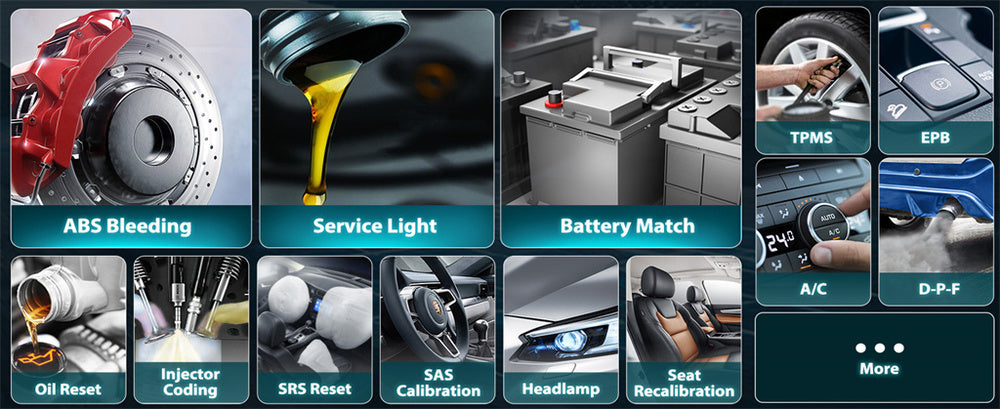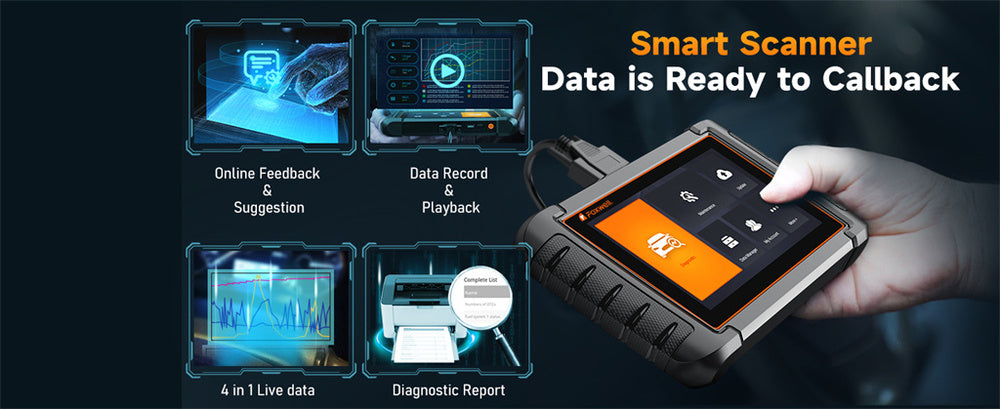If you're like me, you probably didn’t give much thought to your car’s tire pressure monitoring system (TPMS) until that little warning light started blinking on your dashboard. That's when I realized how important it is to have a TPMS scan tool handy, such as the Foxwell NT1009.
This nifty device can save you from a lot of headaches by making it easy to monitor and manage your tire pressure. After some trial and error, I’ve gathered a few tips that can make using a TPMS scan tool a breeze. Here they are:

Choose the Right TPMS Scan Tool for Your Car
First things first, not all TPMS scan tools are created equal. Make sure you get one that's compatible with your vehicle.
- Research: Start by researching different TPMS scan tools online. Look for ones that specifically mention compatibility with your vehicle’s make and model. It might seem tedious, but this step saves a lot of headaches later.
- Read Reviews: Check customer reviews on sites like Amazon or specialized automotive forums. These reviews often provide insights into the reliability and ease of use of the tool. It's always good to learn from others' experiences.
- Check Manufacturer's Website: Visit the manufacturer's website for detailed specifications and compatibility lists. This ensures you have the most accurate and up-to-date information.
For example, when I was searching for a TPMS scan tool for my SUV, I initially bought a generic one that was cheaper but didn't support my vehicle's sensors. After returning it, I purchased a model recommended by fellow SUV owners in an online forum. This tool worked perfectly and saved me a lot of frustration. The key takeaway? Spend a little more time upfront to get the right tool.
Read the Manual – Seriously
Next, take the time to read the manual that comes with your TPMS scan tool.
- Locate the Manual: Once you get your TPMS scan tool, find the manual. It’s usually in the box or available as a PDF on the manufacturer’s website. Don't just toss it aside.
- Identify Key Sections: Focus on sections about setup, basic operation, and troubleshooting. These parts will be your best friend when you first start using the tool.
- Perform a Dry Run: With the manual in hand, do a dry run without actually connecting to your vehicle. This helps familiarize you with the tool's interface and options, making you more confident when you actually use it.
I skipped reading the manual the first time and missed out on learning how to use the tool’s advanced features like real-time pressure monitoring. After going through the manual, I discovered these functions and they have been incredibly helpful in maintaining my tire pressure. Sometimes, a few minutes of reading can save you hours of confusion.
Perform Regular Checks
Regular checks are crucial for maintaining your vehicle's tire health. Make it a habit to use your TPMS scan tool regularly.
- Set a Reminder: Use your phone or calendar to set a monthly reminder to check your tire pressure. Regular checks can catch issues before they become serious problems.
- Initial Setup: Connect your TPMS scan tool to your vehicle following the instructions in the manual. Typically, this involves plugging the tool into the OBD-II port and turning on the ignition. It’s straightforward once you get the hang of it.
- Conduct the Scan: Run a full scan to check the pressure and condition of each tire. Review the readings to ensure everything is within the recommended range.
I set a reminder for the first Sunday of every month to check my tire pressure. This regular check helped me catch a slow leak in one of my tires before it became a major issue. I simply plugged in the tool, selected the 'scan' option, and reviewed the pressure readings for each tire. It's quick, easy, and gives me peace of mind.
Understand the Error Codes
Understanding the error codes is essential for effective use of your TPMS scan tool.
- Refer to the Manual: When you encounter an error code, refer back to the manual for an explanation. This will help you understand what the tool is telling you.
- Look Up Codes Online: If the manual doesn’t provide enough detail, look up the codes online. Many automotive forums and websites offer detailed explanations. The internet is your friend here.
- Take Action: Based on the error code, decide whether it’s something you can fix yourself or if you need professional help. Sometimes it's a simple fix, like replacing a sensor battery, while other times it might be more complex.
I once received an error code indicating a low battery in one of my tire sensors. After confirming the code's meaning online, I bought a replacement sensor battery and followed a YouTube tutorial to change it myself. This saved me a trip to the mechanic and the associated costs. Knowing how to interpret these codes can save you both time and money.
Keep Your Tool Updated
Finally, keeping your TPMS scan tool updated is crucial for its optimal performance.
- Check for Updates: Regularly check the manufacturer’s website for firmware updates. These updates can fix bugs and add new features.
- Download and Install: Follow the instructions to download the update. This usually involves connecting the tool to your computer via USB. It’s a simple process that doesn’t take much time.
- Verify the Update: After updating, verify that the tool is functioning correctly by performing a quick scan on your vehicle. This ensures everything is working as it should.
My TPMS scan tool had an update that improved its accuracy and added support for new sensor models. I downloaded the update from the manufacturer's website, connected the tool to my laptop, and followed the update instructions.
The process was straightforward and ensured my tool was up-to-date with the latest features. Keeping your tool updated means you always have the best performance and most current features.

Conclusion
Using a TPMS scan tool doesn’t have to be intimidating. With the right tool and a little know-how, you can easily keep tabs on your tire pressure and ensure your vehicle is safe on the road. Remember to choose the right tool, read the manual, perform regular checks, understand error codes, and keep your tool updated. These tips have made my life a lot easier, and I hope they do the same for you.
Take control of your vehicle's safety today—invest in a reliable TPMS scan tool and start making regular checks part of your routine. Safe driving!
FAQs:
What is the first step in using a TPMS scan tool?
Begin by ensuring the scan tool is compatible with your vehicle's TPMS system.
How often should I use a TPMS scan tool?
Regularly check tire pressure and sensor status, ideally once a month or before long trips.
Can a TPMS scan tool detect all tire issues?
While it monitors pressure and sensor status, it can't detect physical tire damage or wear. Regular inspections are also necessary.




Leave a comment
This site is protected by hCaptcha and the hCaptcha Privacy Policy and Terms of Service apply.